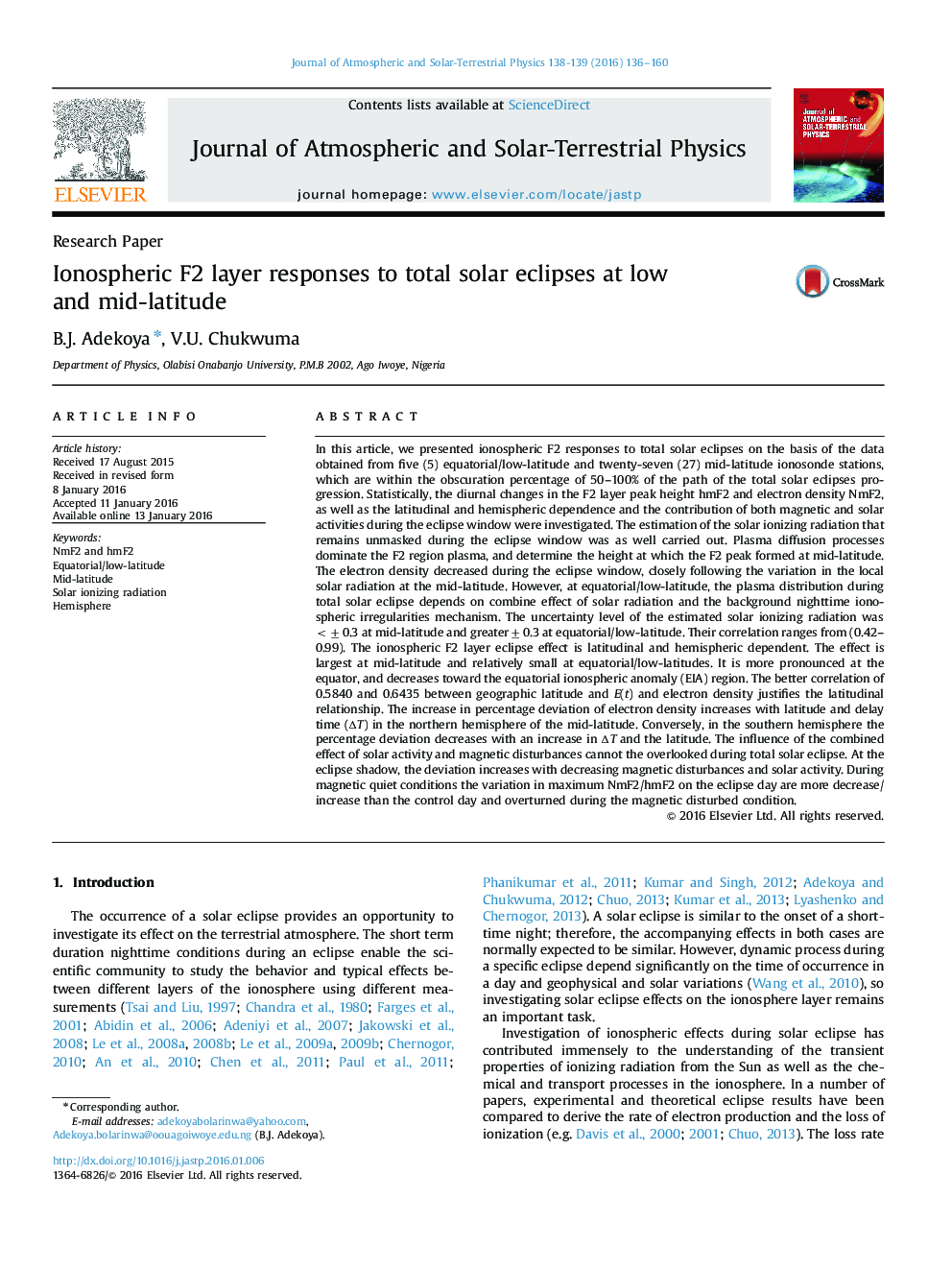| کد مقاله | کد نشریه | سال انتشار | مقاله انگلیسی | نسخه تمام متن |
|---|---|---|---|---|
| 1776316 | 1523607 | 2016 | 25 صفحه PDF | دانلود رایگان |

• The ionospheric NmF2 and hmF2 response during total solar eclipses was investigated.
• Combine effect of solar radiation and nighttime ionospheric irregularities mechanism cannot be overlooked.
• NmF2 response provides good proxy for solar ionizing radiation.
• Latitudinal and hemispheric dependence of eclipse effect were observed with delay time.
• The influence of solar and geomagnetic activity on eclipse was confirmed.
In this article, we presented ionospheric F2 responses to total solar eclipses on the basis of the data obtained from five (5) equatorial/low-latitude and twenty-seven (27) mid-latitude ionosonde stations, which are within the obscuration percentage of 50–100% of the path of the total solar eclipses progression. Statistically, the diurnal changes in the F2 layer peak height hmF2 and electron density NmF2, as well as the latitudinal and hemispheric dependence and the contribution of both magnetic and solar activities during the eclipse window were investigated. The estimation of the solar ionizing radiation that remains unmasked during the eclipse window was as well carried out. Plasma diffusion processes dominate the F2 region plasma, and determine the height at which the F2 peak formed at mid-latitude. The electron density decreased during the eclipse window, closely following the variation in the local solar radiation at the mid-latitude. However, at equatorial/low-latitude, the plasma distribution during total solar eclipse depends on combine effect of solar radiation and the background nighttime ionospheric irregularities mechanism. The uncertainty level of the estimated solar ionizing radiation was <±0.3 at mid-latitude and greater±0.3 at equatorial/low-latitude. Their correlation ranges from (0.42–0.99). The ionospheric F2 layer eclipse effect is latitudinal and hemispheric dependent. The effect is largest at mid-latitude and relatively small at equatorial/low-latitudes. It is more pronounced at the equator, and decreases toward the equatorial ionospheric anomaly (EIA) region. The better correlation of 0.5840 and 0.6435 between geographic latitude and E(t) and electron density justifies the latitudinal relationship. The increase in percentage deviation of electron density increases with latitude and delay time (∆T) in the northern hemisphere of the mid-latitude. Conversely, in the southern hemisphere the percentage deviation decreases with an increase in ∆T and the latitude. The influence of the combined effect of solar activity and magnetic disturbances cannot the overlooked during total solar eclipse. At the eclipse shadow, the deviation increases with decreasing magnetic disturbances and solar activity. During magnetic quiet conditions the variation in maximum NmF2/hmF2 on the eclipse day are more decrease/increase than the control day and overturned during the magnetic disturbed condition.
Journal: Journal of Atmospheric and Solar-Terrestrial Physics - Volumes 138–139, February 2016, Pages 136–160